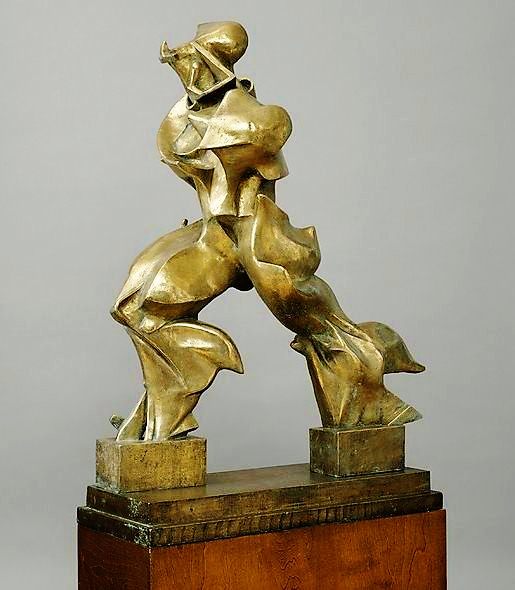 Umberto Boccioni, Unique Forms of Continuity in Space, 1913, bronze, 3' 8
Umberto Boccioni, Unique Forms of Continuity in Space, 1913, bronze, 3' 8
Futurism is an artistic movement that originated in Italy in 1909 to become the “caffeine of Europe.” Futurism was inspired by Analytic Cubism, but with a focus on technology and “progress.” In the Futurist Manifesto, written by Filippo Tommaso Marinetti and published in a French newspaper in 1909, the author attacked everything old, dull, and feminine and promoted all things masculine and the experiences of warfare.
One can see many of the values of the Futurists in Umberto Boccioni‘s Unique Forms of Continuity in Space. It presents a nude male in full stride; it is the Classical or Renaissance figure reinterpreted for a new century. The forms of the body swell and stretch to suggest the power and speed with which this ideal male moves toward the future.
Like several other Futurist artists, Boccioni fought and died in World War I. Many of the Futurist artists who survived the Great War returned to Italy to support the rise of Fascism under Benito Mussolini.